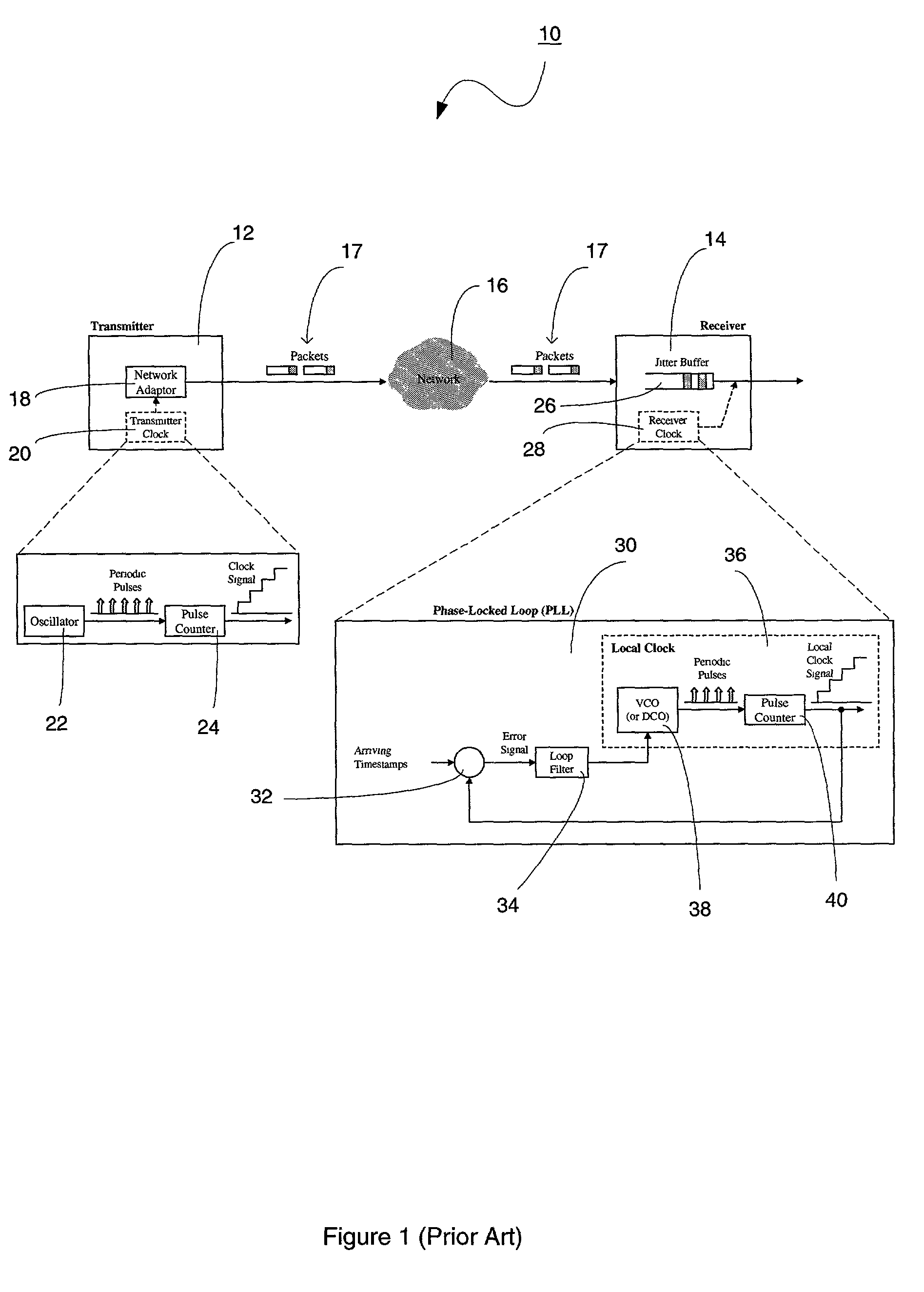Technique for synchronizing clocks in a network
a clock and network technology, applied in the direction of generating/distributing signals, selective content distribution, instruments, etc., can solve the problems of data loss, periodic line errors, data loss,
- Summary
- Abstract
- Description
- Claims
- Application Information
AI Technical Summary
Benefits of technology
Problems solved by technology
Method used
Image
Examples
Embodiment Construction
)
[0053]Referring to FIG. 4, there is shown an improved phase-locked loop (PLL) 50 that uses differences in timestamps to perform clock synchronization in accordance with the present invention. The improved PLL 50 comprises a first delay element 52, a first differencing element 54, a second differencing element 56, a loop filter 58, a digitally controlled oscillator (DCO) 60, a pulse counter 62, a second delay element 64, and a third differencing element 66.
[0054]Similar to FIG. 3, FIG. 4 shows how jitter is introduced (figuratively via summing junction 42) to timestamps that are generated at a transmitter and later received at the improved PLL 50, which is located at a receiver. As indicated above, the introduced jitter is mainly caused by frequency drift between transmitter and receiver clocks, timestamp packetization, and packet multiplexing and variations in queuing delays in network switches.
[0055]It should be assumed that both the transmitter and the receiver have their own tim...
PUM
 Login to View More
Login to View More Abstract
Description
Claims
Application Information
 Login to View More
Login to View More - R&D
- Intellectual Property
- Life Sciences
- Materials
- Tech Scout
- Unparalleled Data Quality
- Higher Quality Content
- 60% Fewer Hallucinations
Browse by: Latest US Patents, China's latest patents, Technical Efficacy Thesaurus, Application Domain, Technology Topic, Popular Technical Reports.
© 2025 PatSnap. All rights reserved.Legal|Privacy policy|Modern Slavery Act Transparency Statement|Sitemap|About US| Contact US: help@patsnap.com



